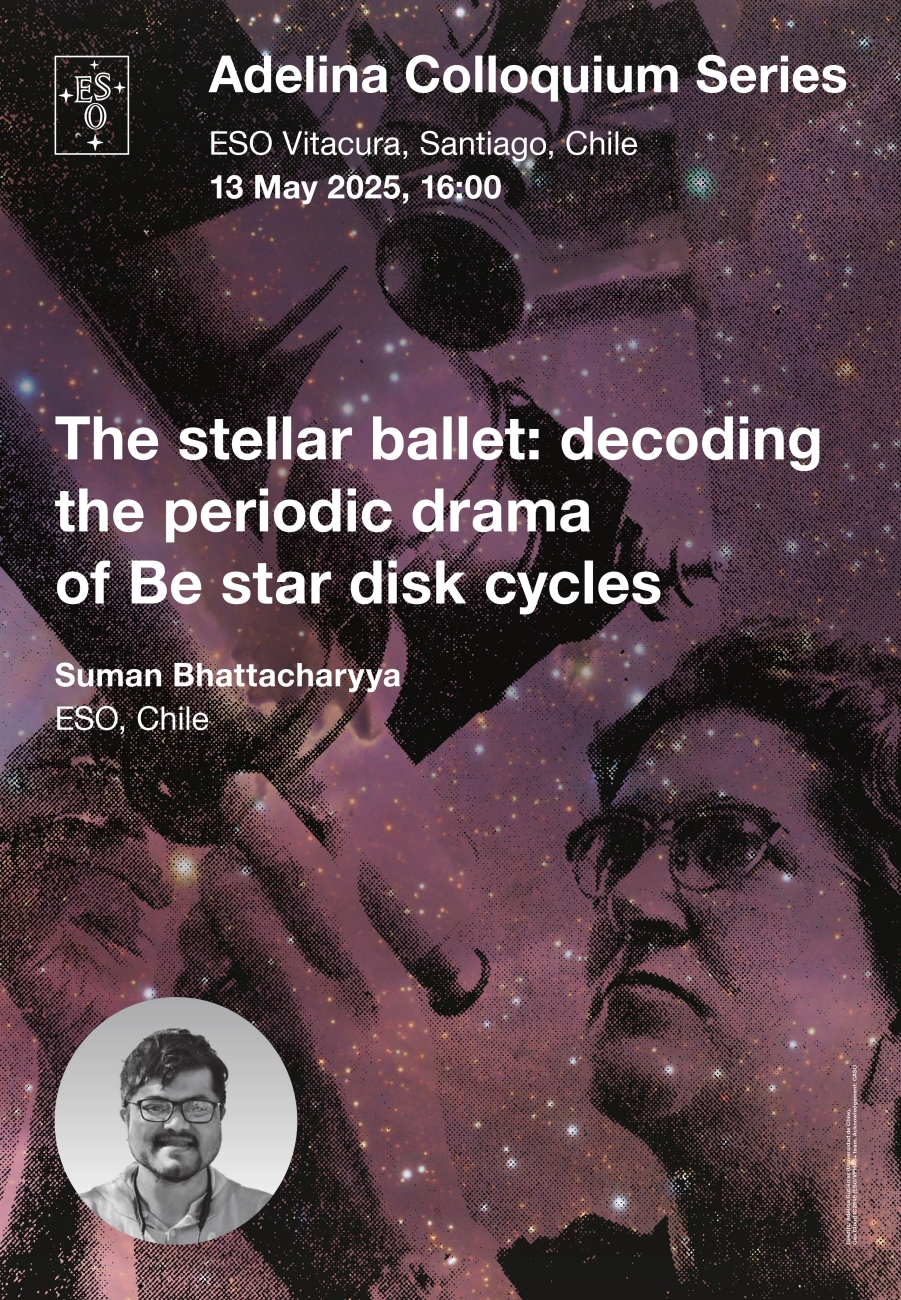The Stellar Ballet: Decoding the Periodic Drama of Be Star Disk Cycles
Classical Be (CBe) stars—main-sequence B stars distinguished by their rapid rotation and gaseous circumstellar disks—provide a crucial framework for examining mass-loss mechanisms, angular momentum evolution, and circumstellar disk physics. While these stars are fundamental to understanding rapidly rotating stellar fate, our study focuses specifically on their duty cycle (the proportion of time their disks remain active) and the physical mechanisms driving disk formation and dissipation. Understanding these phenomena is vital for comprehending stellar evolution and mass-loss processes. Our research leverages the Be Star Spectra (BeSS) database—a comprehensive citizen-science initiative—alongside high-resolution professional datasets from X-Shooter, UVES, and FEROS instruments. This extensive dataset enables an unprecedented long-term analysis of 320 representative Be stars. Our study examines the temporal patterns of disk formation, dissipation, and stability, correlated with stellar parameters such as spectral type, luminosity class, and rotational velocity. Advanced statistical techniques, such as autocorrelation analysis, equivalent width (EW) histograms, and multi-epoch correlation metrics, along with incorporating rigorous error analysis and utilizes machine learning algorithms (Convolution Neural Network) for pattern recognition and prediction of disk behaviour. Initial case studies of representative stars (e.g., 28 Cyg, QR Vul, V1369 Ori etc) reveal intriguing patterns. For instance, 28 Cyg, a well-studied Be star observed over an 18-year period. Our analysis revealed weak periodicity in disk behaviour, with autocorrelation values dropping below 0.2 beyond 100 days, indicating stochastic variations. The EW distribution exhibited a bimodal structure, with peaks near -10 Å and +5 Å, corresponding to distinct phases of disk dissipation and growth. During the observational period, the disk was present for 83% of the time, with average growth and decay timescales of 2.67 and 3 years, respectively. These findings illustrate the utility of our methods in providing detailed, quantitative insights into the dynamics of circumstellar disks. By combining this detailed case study with the analysis of all the sample stars, we aim to establish a robust statistical framework for understanding the duty cycles and variability of CBe stars. This work provides a foundation for testing theoretical models, such as the viscous decretion disk (VDD) framework , and advancing our knowledge of circumstellar disk physics and the evolutionary pathways of rapidly rotating stars.

